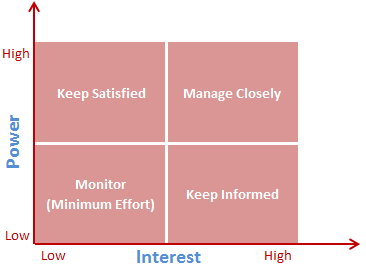Written by: Zsolt Czimbalmos - PMP, PBA, ACP, DASSM
The role of stakeholders in projects
In project management, stakeholders play a key role in the successful implementation of a project. In this post, we aim to answer the following questions. Where does the term come from? What management techniques and tools can we use to support our work with them?
IF YOU WOULD RATHER LISTEN OR WATCH SIMILAR CONTENT, CLICK ON THE VIDEO BELOW! (Hungarian version)
Who are the stakeholders in project management?
The term stakeholder is most commonly used in Hungarian to mean interested party, or occasionally stakeholder. Whether agile or traditional projects, their success is largely determined by the ability of stakeholders to work together towards a (hopefully) common goal.
Stakeholders may be groups (e.g. users, disciplines) or individuals who have a direct impact on the project, development and/or whose daily activities may be affected by the deliverables of the project.
Types of stakeholders
Along these lines, it can be seen that the range of stakeholders in a project can be quite broad, it is not uncommon for a major project to have hundreds of stakeholders "pop up" during the planning and implementation of tasks.
Typical stakeholders could be, for example:
- Customer's representative
- Areas of expertise involved
- Project Manager
- Projektcsapat
- Suppliers
- Users

Origin of the term stakeholder
In our training courses, we often ask where the term "stakeholder" comes from and why is it used in international terminology? There is no single answer to this question, the term is usually derived from two terms.
According to one version, the term stake also means pile, and there are theories that this word derives from the context used during colonialism. In colonial times, stake-holders were the people who marked out the boundaries of the occupied, alienated territories by means of stakes.
Another version of the term is that it originated in horse racing, where the word stake was used as a bet. According to this view, the stakeholders were the people who looked after the stakes until the end of the race or until the payout. In this interpretation, stakeholders had no direct financial interest in the outcome of the contest.
The term stakeholder first appeared in the management literature in an internal memorandum of the Stanford Research Institute in 1963 (Freeman, 1984, p. 31).The word stakeholder in this context refers to any group or individual who can influence or be influenced by the achievement of the organization's goals.
So, as mentioned above, the term stakeholder was first used in an organisational context, project management, like so many other terms, adopted it, and in this field it was used later.
The role of stakeholders in projects
The impact of stakeholders on projects can be high for several reasons:
- Impact on the target system, scope - As the owner of the project or representatives of the areas of need may be stakeholders, these individuals or groups may also have an impact on the target system or scope of the project.
- Impact on implementation - In addition to the objectives, stakeholders can also have an impact on the implementation of the project, on the technical tasks. These stakeholders may include members of the project team, suppliers, subcontractors or external experts involved in the project.
Support or obstacle?
Given that the stakeholders are people, we cannot ignore the so-called human factors. People usually have individual goals and motivations that can determine their involvement and the way they contribute. There may be people around projects who are "in the same boat", but there may also be people who have a vested interest in the success of the project. Of course, this opposition is not always accepted, and most often it is behind the scenes, even without direct confrontation, in an attempt to hinder or impede the progress of the project. This is one of the reasons why we recommend that project leaders, claimants or, where appropriate, business analysts invest time and energy in clarifying, communicating and accepting the objectives as widely as possible during the preparation of projects.
Of course, among the typically wide range of stakeholders, there are always some individuals or groups that are more important than others, but we will come back to this later.

Stakeholder management or working with them?
Previously, the international literature consistently used the term stakeholder management to refer to the planning and implementation of activities with stakeholders, but with the proliferation of more people-centred and collaborative project management practices, this has been replaced by the term stakeholder engagement. This also reflects the increasing emphasis on the need to involve people and stakeholders in projects rather than 'managing' them. Sufficient involvement and a collaborative approach, based on common goals and agreed by all parties, increases efficiency, motivation and commitment, which can provide projects with a strong impetus and benefits.
Stakeholder analysis and its tools
Planning the interaction with stakeholders is a task in both traditional and agile projects. The difference lies more in the roles responsible for planning than in the tools used. In traditional project management, the task of stakeholder analysis falls primarily to the project manager (and in some cases also to the business analyst), whereas in agile project management it is more the responsibility of the product owner and the team.
With a bit of research, we can find dozens of models and tools that can be used to support stakeholder analysis, and even develop our own models and visualisation techniques if they are more appropriate for us. When choosing the tools to use - given that the outcome of stakeholder analysis is most often not a product to be delivered, and that it is in our own well-understood interest to carry out this task - one basic rule should be kept in mind: the tool chosen should support our work as much as possible, provide sufficient clarity and efficient use.
Power-interest grid
One of the most widely used tools for stakeholder analysis is the so-called power-interest grid. This tool provides a snapshot of the project stakeholders, which can be represented in the following structure:

The two dimensions of the matrix, or if you like the coordinate system, can be the level of power and the level of interest of the stakeholders. According to these aspects, the stakeholders can be nicely represented by points, numbers or even x's as a map. Importantly, this map is a snapshot, the location of stakeholders in the matrix can change at any time, which is why it is advisable to update the stakeholder analysis regularly throughout the project.
Depending on the neighbourhood in which the stakeholders are located, the above model also suggests which approach to take with which stakeholder group:
- Let's follow up! - They are the lowest priority stakeholder group, but it is worth monitoring and recording any changes (e.g. promotion, change of position, growth of interest). Do not put too much effort into this, the aim is to keep communication and information to a minimum.
- Keep it happy! - as this group of stakeholders is very powerful, it is worth keeping them happy and taking their needs into account even if they show no interest in the project. They should be treated with care, as high power gives them the opportunity to help or even seriously hinder projects. The key phrase: "Peace is better!"
- Provide regular information! - typically users in this quadrant are stakeholders, and in their case it is important to provide frequent information and ask for feedback to make sure that no major problems arise. If these stakeholders feel that the project is in their interest, they are likely to be helpful partners in the development process.
- Let's work closely together! - these stakeholders are in most cases decision makers and can have the greatest impact on the project, they are the key stakeholders. It is worth keeping these stakeholders 'close' to you, and the key is to keep them engaged and involved.
Documentation options
It may also be useful to document the results of the stakeholder analysis and key information about stakeholders in some cases. When making the decision to do this, the most important question to ask yourself is: how will it help my work if I record this information? We try to avoid unnecessary administration, but there may be projects with a large (up to hundreds of stakeholders) or volatile stakeholder base, in which case a stakeholder register can be a useful tool. Such a register can include the most important basic information about the stakeholders (e.g. position, contact details, location, etc.), known expectations, needs and the results of the stakeholder analysis. In such cases, the stakeholder register is prepared by the project manager, business analyst or team for their own use and does not need to be provided to the client due to the confidential nature of the information.
If you want to increase the efficiency of your projects, contact us for a free consultation or take a look at our training courses!

 Designabc
Designabc